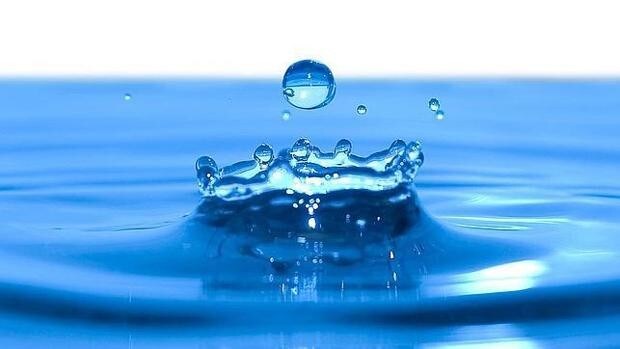 "Water is wet" is a phrase used synonymously with the obvious. But can we explain why? It's time to get sophisticated and explore this and many other everyday phenomena using fluid physics.
"Water is wet" is a phrase used synonymously with the obvious. But can we explain why? It's time to get sophisticated and explore this and many other everyday phenomena using fluid physics.
Fluid physics emerged as a formal discipline in the 16th century to contradict some of Aristotle's ideas. According to the philosopher, nature did not support the existence of a vacuum. But Pascal and others approached the question from the opposite perspective. To investigate the absence of matter, it was necessary to study matter itself.
Pascal's assignment to his brother-in-law to ascend to the top of an extinct volcano with a pair of mercury barometers corroborated the experiments on the weight of the atmosphere and the existence of a vacuum conducted by his predecessor, Torricelli. This opened a vast floodgate of knowledge.
Fluids are gases and liquids, both smoke from a chimney and water. They are all substances with such weak forces between their particles that they cannot regain their shape if they lose it.
From toothpaste to Formula 1
But where do we find fluid physics in everyday life? For example, in the way pressure changes are transmitted between two points in a fluid. This is how we squeeze toothpaste out of a tube using the same principle that drives a syringe and hydraulic brakes.
If we dare to generalize this to fluids in motion, we find, through Bernoulli's law, the explanation for the ground effect of Formula 1 cars—which causes the vehicle to stick to the asphalt to improve its aerodynamics—or how marmots cool their burrows. In fact, these laws apply to any suction process, such as nursing at the breast.
Another field long linked to fluids is medicine. Any anesthesiologist must have a solid understanding of the physics of liquids and gases to handle catheters or ventilation systems. The Weber brothers were also physicians, experts in blood circulation, whose magical viscosity makes it flow more slowly near vessel walls, as Pouiseille, also a physician, demonstrated.
It's the same thing that happens when we move a biscuit across the surface of custard in a bowl. The less liquid there is in the container, the easier it will be to move. This is also how tectonic plates behave when they move across the Earth's mantle, one of the many applications of fluid physics to geology. It's interesting that both sciences connect with everyday life through fluid physics. Another connection is Darcy's law for the passage of a liquid through a porous medium, which can be a sandy soil or the ground beans of an Italian coffee maker.
Without leaving the kitchen, but returning to viscosity, there are still some interesting examples to mention. When ketchup is bottled with a precise blow, it flows more easily. Paste, along with yogurt, mayonnaise, and other viscous foods, falls under the category of non-Newtonian foods, so called because they are physically more complex than those with which the great genius delved into this subdiscipline of physics when he set out to launch it with his wisdom.
In the kitchen, it's easy for us to experiment with the effect of physical conditions on fluids in general. This is clearly evident when we observe that honey flows more easily when heated. This once again shows us how many sides there are to cover when investigating fluid physics.
Why do fluids behave like fluids?
However, the examples given are no excuse to avoid the initial topic. Why does water wet, oil stain, and ink stain? It's due to the forces of adhesion. That is, the affinity between liquid and solid substances.
This means that, when a tissue comes into contact with these liquids, they would climb, defying gravity (capillarity). But liquids are narcissistic. They feel a tremendous attachment to themselves: the forces of cohesion. This generates what is known as surface tension, which is responsible for the formation of water droplets and other liquids and their maintenance of their spherical shape. Worker ants use this to transport water to their colony.
Will you raise a glass with me to celebrate so much science? Then I invite you to observe the tears in the wine, another consequence of surface tension.
Unfortunately, I can only cover the breadth of fluid physics with a few brushstrokes. In saying this, I recall that the fact that paint is a non-Newtonian fluid made it possible to invent the gotelé. But it's not worth getting caught up in nostalgia and shelving topics of absolute urgency and relevance.
Fluid physics is fundamental to explaining a wide range of atmospheric and oceanographic phenomena. And it refutes the notion that the melting of the North Pole is raising sea levels. The argument uses Archimedes' principle, the same one that keeps exploration ships afloat in this field of science. In this context, I want to point out that climate change makes flights more susceptible to the phenomenon of turbulence.
But then I'd be very tempted to make it visual by resorting to Humphrey Bogart. I'd take the image of him smoking a cigar and releasing a column of smoke that turns into a festival of twists and turns.
It's best to give the audience a break. And let the metaphor serve to recommend caution while Covid-19 is still with us. To achieve this goal, fluid physics will continue to brilliantly assist other disciplines and tell us about droplets and their journeys.
Ruth Lazkoz is a professor of theoretical physics at the University of the Basque Country.
This article was originally published on The Conversation.
<img src="»https://counter.theconversation.com/content/181533/count.gif?distributor=republish-lightbox-advanced»" alt="»The" conversation» width="»1″" height="»1″" style="»border:" none !important; box-shadow: margin: 0 max-height: 1px max-width: min-height: min-width: opacity: outline: padding: !important» />
